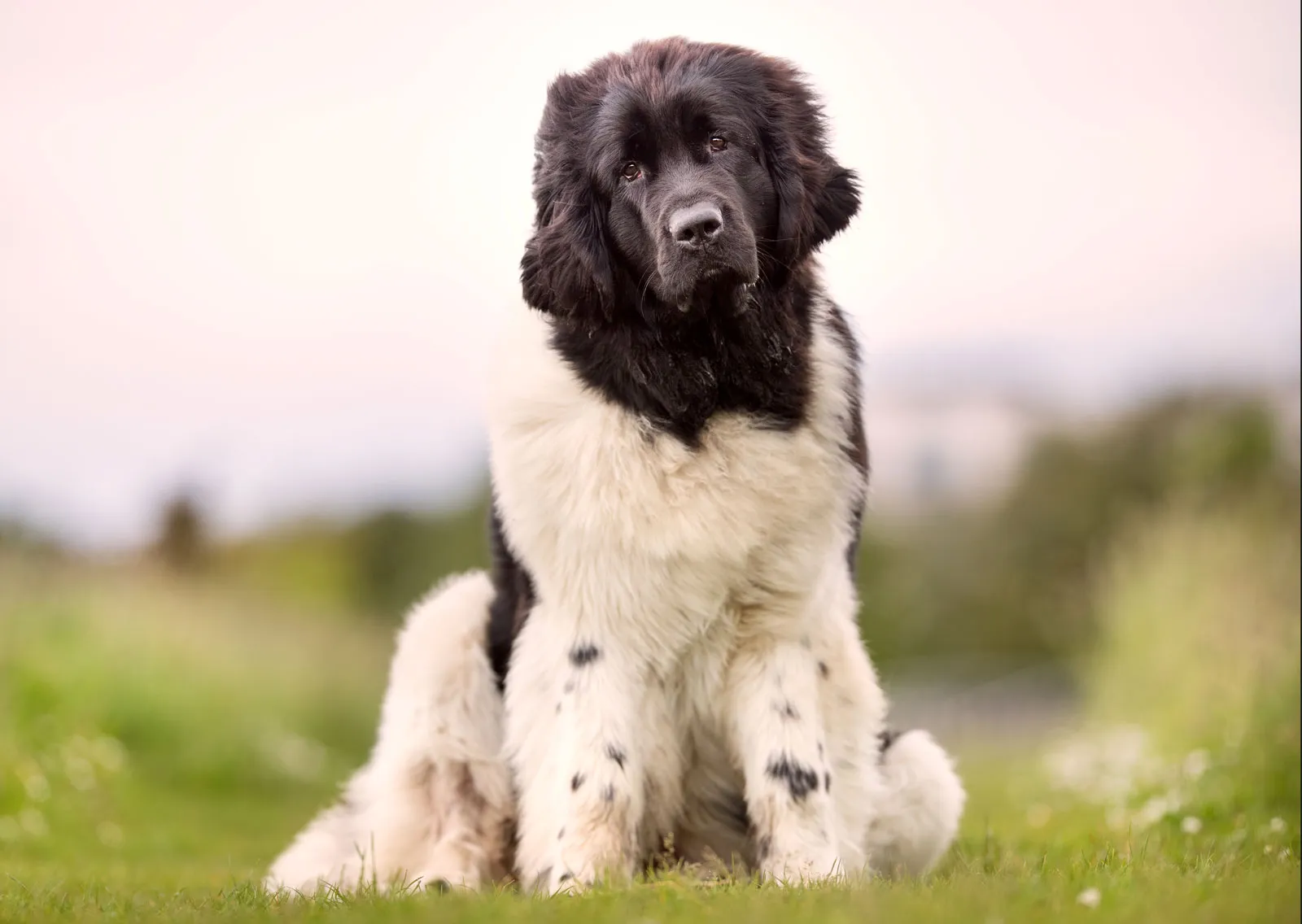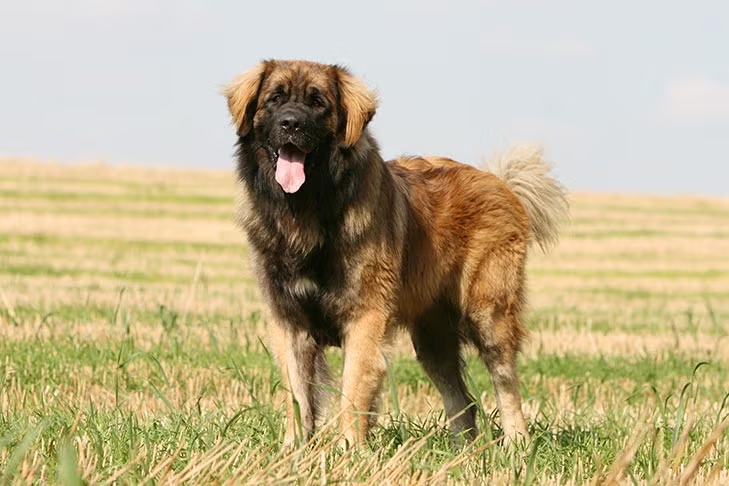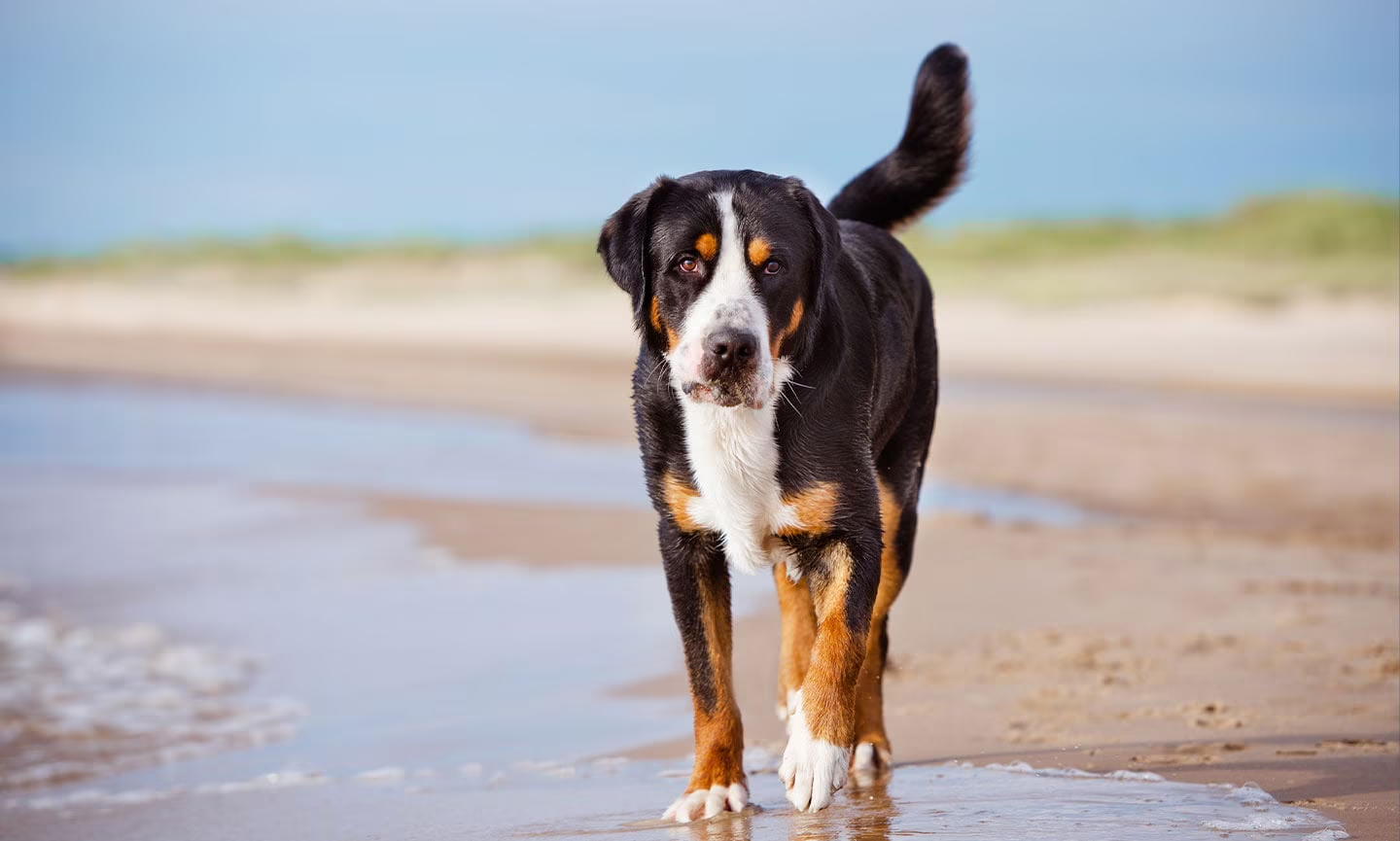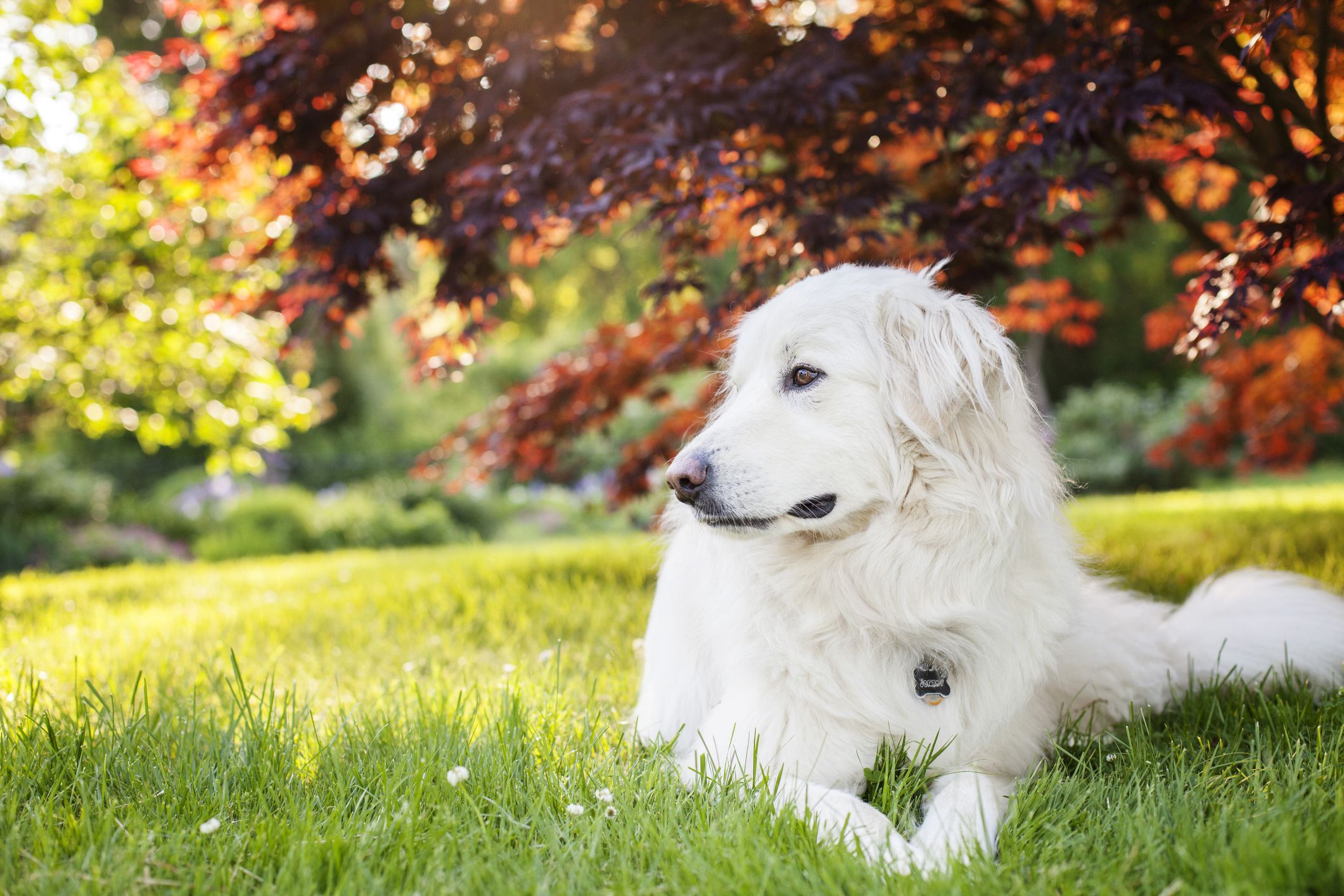The first time I spotted a Landseer, I thought it was some kind of panda-cow hybrid galloping through the dog park. With its striking black and white coat and massive size, this dog definitely stands out from the crowd. And while some might mistake it for just a Newfoundland with different coloring, there’s actually much more to this magnificent breed than meets the eye.
As a dedicated dog enthusiast who’s spent countless hours researching and interacting with various breeds, I’ve developed a special appreciation for these gentle giants. Whether you’re considering adding one to your family or just curious about this relatively rare breed, I’m excited to share everything you need to know about the fascinating Landseer.
From their heroic water rescue skills to their incredibly sweet temperament with children, these dogs have a rich history and unique characteristics that make them truly special companions. So grab a cup of coffee (and maybe a mop for some potential drool) as we dive into the wonderful world of the Landseer!
Landseer vs. Newfoundland: What’s the Difference?
Before we go any further, let’s address the elephant—or rather, the giant dog—in the room. Is a Landseer just a black and white Newfoundland, or is it a separate breed? Well, the answer depends on who you ask and where in the world you’re standing.
In North America and the United Kingdom, the Landseer is considered a color variation of the Newfoundland breed. The American Kennel Club (AKC) recognizes black and white Newfoundlands as “Landseer Newfoundlands,” named after the 19th-century British painter Sir Edwin Landseer, who featured these dogs in many of his famous works.
However, in continental Europe, particularly Germany, Switzerland, and the Netherlands, the Landseer is recognized as a separate breed called the Landseer European Continental Type (ECT). The Fédération Cynologique Internationale (FCI) has recognized it as a distinct breed since 1960.
So what are the differences? The European Landseer typically has:
- A taller, less bulky build with longer legs
- A more refined head and slightly longer muzzle
- A less dense coat that’s easier to maintain
- A more energetic temperament
- Potentially fewer health issues and a slightly longer lifespan (though still in the 8-10 year range)
For this article, I’ll be covering both types, but with a focus on the distinctive European Landseer (ECT), as it has some unique characteristics worth highlighting.
A Noble History: From Fishermen’s Helper to Artistic Muse
The Landseer’s story begins in Newfoundland, Canada, where these powerful dogs worked alongside fishermen as both working dogs and water rescue experts. Their ancestors likely included indigenous Canadian dogs and various European breeds brought by Portuguese, Spanish, and Basque fishermen in the 16th and 17th centuries.
These dogs were prized for their exceptional swimming abilities, strength, and water-resistant coats. They could haul fishing nets, retrieve items that fell overboard, and—perhaps most impressively—rescue drowning people. Their webbed feet and strong swimming instincts made them natural lifesavers in the cold waters off Newfoundland’s coast.
In the early 19th century, these dogs made their way to England, where they quickly captured the attention of the aristocracy. Sir Edwin Landseer, a prominent British painter, became particularly enamored with the black and white variety and featured them in several of his works. His most famous painting, “A Distinguished Member of the Humane Society” (1831), depicts a Newfoundland dog who reportedly saved 23 people from drowning in the River Thames.
This artistic connection led to the black and white coloration being dubbed “Landseer” in honor of the artist. Interestingly, during the Victorian era, the Landseer coloration was actually more popular than the solid black Newfoundland we commonly see today!
After World War I, with the breed nearly extinct, dedicated breeders in Germany, the Netherlands, and Switzerland worked to preserve and refine the Landseer type, eventually developing what would become recognized as the separate Landseer ECT breed in continental Europe.
Unmistakable Appearance: The Panda of the Dog World
There’s no mistaking a Landseer—these dogs have a presence that turns heads wherever they go. Let’s break down their distinctive appearance:
Size and Build
Landseers are unmistakably in the “giant breed” category. Males stand about 28-31.5 inches tall at the shoulder and typically weigh between 120-150 pounds. Females are slightly smaller but still substantial at 26-29 inches and 100-130 pounds.
The European Landseer (ECT) has a somewhat taller, more athletic build compared to the Newfoundland, with longer legs and a less massive body. They’re still powerfully built with deep chests and strong muscles, but have a more agile appearance that reflects their working heritage.
That Distinctive Coat
The Landseer’s most defining feature is undoubtedly its striking black and white coat. The base color is white with clearly defined black patches on the body and hindquarters. The head is typically black with a white muzzle and a symmetrical white blaze running up between the eyes. The chest, collar, legs, and tail are predominantly white.
This distinctive pattern is the result of a recessive piebald gene, which is why even purebred Newfoundlands can sometimes produce Landseer-colored puppies if both parents carry the gene.
Their double coat consists of a water-resistant outer layer and a soft, dense undercoat. The European Landseer’s coat is typically not as thick as the Newfoundland’s, making grooming somewhat easier (though still substantial). The texture is straight to slightly wavy, and the fur is medium to long in length.
Facial Features and Expression
Landseers have gentle, intelligent faces with dark, almond-shaped eyes that convey a sweet, attentive expression. Their ears are medium-sized, triangular, and hang close to the head. The European Landseer has a slightly longer muzzle and less pronounced jowls than the Newfoundland, which contributes to their reduced drooling (though they can still produce impressive amounts of slobber after drinking).
Their noble appearance combined with their gentle expression gives them an air of dignified kindness that perfectly reflects their temperament.
Temperament: The Heart and Soul of a Gentle Giant
When it comes to temperament, the Landseer is truly the gold standard for what we mean when we say “gentle giant.” These dogs combine a calm, patient nature with loyalty and protective instincts that make them exceptional family companions.
Family-Oriented and Child-Friendly
Landseers are renowned for their incredible gentleness with children. Despite their imposing size, they seem to inherently understand the need for careful interaction with smaller humans. They’re patient enough to tolerate the occasionally clumsy handling that comes with children, and their protective instincts make them natural guardians.
Many Landseer owners share stories of their dogs deliberately lowering themselves to appear less intimidating to small children or gently placing themselves between children and potential dangers. Of course, due to their sheer size, interactions between young children and Landseers should always be supervised—an enthusiastic tail wag from a 150-pound dog can unintentionally knock a toddler over!
Protective Without Aggression
While Landseers aren’t typically aggressive or prone to excessive barking, they do have a natural protective instinct. Rather than launching an aggressive defense, a Landseer will often simply place themselves between their family and any perceived threat. Their imposing size alone is usually enough to deter unwanted visitors.
This balanced approach to protection—alert and watchful without being reactive or aggressive—makes them excellent family guardians, especially for households with children.
Water-Loving Swimmers
True to their heritage, Landseers have an absolute passion for water. Swimming seems to be hardwired into their DNA, and many owners report that their Landseers will seek out any body of water, from pools to puddles to lakes.
This natural swimming ability, combined with their instinctive desire to rescue, means Landseers excel at water rescue work. Some have even been known to “rescue” family members they perceive to be in danger while swimming, whether help is needed or not!
Intelligent and Trainable
Landseers are highly intelligent dogs who learn quickly and respond well to positive, reward-based training methods. They have a natural desire to please their owners, which makes them generally agreeable students.
However, like many large breeds, they mature slowly, with their “puppy phase” sometimes lasting up to 18 months. During this time, consistent, patient training is essential to prevent a full-grown Landseer from developing unmanageable behaviors.
Early socialization is particularly important to help them develop into well-adjusted adults who are comfortable in various situations and around different people and animals.
Health and Lifespan: Understanding the Giant Breed Reality
Like all purebred dogs, Landseers are prone to certain health conditions. Additionally, as with most giant breeds, they have a relatively short lifespan compared to smaller dogs. Being informed about these aspects is crucial for anyone considering bringing a Landseer into their family.
Lifespan
The average lifespan of a Landseer is approximately 8-10 years. While this might seem short compared to smaller breeds that can live 15+ years, it’s fairly typical for dogs of this size.
Some Landseer enthusiasts claim that the European Landseer (ECT) may have a slightly longer lifespan than the Newfoundland due to less intensive inbreeding and a somewhat lighter frame that puts less strain on their body. However, the difference, if any, is likely only a year or two at most.
Common Health Concerns
Landseers can be prone to several health conditions, many of which are common among large and giant breeds:
- Hip and Elbow Dysplasia: These developmental conditions affect the joints and can cause pain, lameness, and eventually arthritis.
- Subvalvular Aortic Stenosis (SAS): A heart condition that can range from mild to severe and potentially lead to heart failure.
- Gastric Dilatation-Volvulus (Bloat): A life-threatening condition where the stomach fills with gas and twists. This requires immediate emergency veterinary intervention.
- Cystinuria: A genetic condition that can lead to the formation of stones in the urinary tract.
- Cataracts and Progressive Retinal Atrophy: Eye conditions that can affect vision and potentially lead to blindness.
- Ear Infections: The drop ears and water-loving nature can make them prone to ear issues.
Working with a reputable breeder who performs appropriate health testing on their breeding stock is essential for minimizing these risks. Some Landseer enthusiasts claim that the European Landseer (ECT) has fewer health issues than the Newfoundland due to broader genetic diversity, but this varies by bloodline.
Preventative Care
To help your Landseer live the longest, healthiest life possible:
- Maintain a healthy weight – excess pounds put additional strain on joints and hearts
- Feed multiple smaller meals rather than one large meal to reduce bloat risk
- Consider a preventative gastropexy surgery to prevent bloat
- Schedule regular veterinary check-ups, ideally twice yearly for adult dogs
- Keep ears clean and dry, especially after swimming
- Provide appropriate exercise without overexertion, especially in young dogs and in warm weather
- Consider joint supplements containing glucosamine and chondroitin
With proper care and attention, many Landseers can live healthy, active lives well into their senior years, though owners should be prepared for the emotional and financial aspects of caring for an aging giant breed.
Living With a Landseer: Day-to-Day Realities
Before bringing home a Landseer, it’s important to understand what daily life with these gentle giants entails. They have specific needs that differ from more common breeds, and being prepared will ensure a happy relationship for both you and your dog.
Exercise Requirements
Despite their working heritage, Landseers have moderate exercise needs compared to some high-energy breeds. They typically do well with:
- 45-60 minutes of daily exercise, which can include walks, play sessions, or swimming
- Access to a securely fenced yard for free movement
- Swimming opportunities (which they absolutely love)
- Low-impact activities, especially while they’re growing
It’s important not to over-exercise young Landseers while they’re still growing, as this can damage developing joints. Similarly, adult Landseers should not be exercised in hot weather as they can overheat quickly due to their size and thick coats.
Interestingly, while Landseers enjoy their daily exercise, they’re generally calm and even somewhat lazy around the house, often content to simply lounge near their family members.
Grooming Needs
That beautiful coat comes with significant maintenance requirements:
- Brushing at least every other day with the right tools (slicker brush, undercoat rake, and wide-toothed comb)
- More frequent brushing during seasonal shedding (spring and fall), when they “blow” their undercoat
- Regular nail trimming, ear cleaning, and dental care
- Occasional baths (every 4-8 weeks, depending on activities and coat condition)
The European Landseer (ECT) typically has a less dense coat than the Newfoundland, which can make grooming somewhat easier, but it’s still a significant commitment. Be prepared for fur—lots of it. Landseers shed year-round, with heavier shedding in spring and fall.
Also, while the European Landseer may drool less than the Newfoundland due to tighter lips, they can still produce impressive amounts of slobber, particularly after drinking or in warm weather. Keeping a drool towel handy is advisable!
Space and Living Arrangements
Landseers don’t necessarily need a huge amount of space to move around, but they do need enough room to be comfortable. Their ideal living situation includes:
- A home with at least a moderate-sized yard
- Enough indoor space for them to maneuver without constantly knocking things over
- Access to cool resting areas, especially in warmer climates
- Secure fencing if they have yard access
While technically possible to keep a Landseer in an apartment (they’re surprisingly calm indoors), it’s challenging due to their size and grooming needs. More important than square footage is the amount of time they spend with their people—Landseers form strong bonds with their families and don’t do well when left alone for extended periods.
Feeding Guidelines
Nutrition is particularly important for giant breeds like the Landseer. Their dietary needs include:
- High-quality food formulated for large or giant breeds
- Appropriate calcium and phosphorus levels, especially for puppies
- Careful portion control to maintain ideal weight
- Multiple smaller meals rather than one large meal (to reduce bloat risk)
Adult Landseers typically eat between 4-6 cups of high-quality dry food daily, divided into at least two meals. The exact amount will vary based on the dog’s size, age, activity level, and metabolism.
While puppies require a diet with adequate protein for growth, it’s important not to overfeed them or supplement with calcium, as too-rapid growth can contribute to joint problems.
Is a Landseer Right for Your Family?
After learning about these magnificent dogs, you might be wondering if a Landseer would be a good fit for your household. Here’s a candid assessment of who might be well-matched with a Landseer:
You Might Be a Good Landseer Owner If:
- You have adequate space: A home with at least some yard is ideal for these large dogs
- You’re home frequently: These dogs form strong bonds with their families and don’t do well with extended alone time
- You live in a moderate to cool climate: Their thick coats make hot weather challenging
- You can handle their size: Not just physically, but also the financial aspects of feeding, housing, and providing veterinary care for a giant breed
- You don’t mind fur and some drool: Even with regular grooming, expect hair on your clothes and occasional slobber
- You appreciate a calm, gentle temperament: If you’re looking for a loving family companion rather than a high-energy sports partner
- You have access to water: While not essential, swimming opportunities will make your Landseer extremely happy
This Might Not Be Your Breed If:
- You live in a very hot climate: Their thick coats make heat tolerance poor
- You’re away from home for long hours: Landseers need companionship and don’t thrive when left alone regularly
- You’re on a tight budget: From food to veterinary care to grooming supplies, giant breeds are expensive to maintain
- You can’t commit to regular grooming: That magnificent coat requires consistent maintenance
- You want a long-lived dog: Their 8-10 year lifespan is shorter than many breeds, which can be heartbreaking for families
- You’re a first-time dog owner: While gentle, their size and specific needs make them better suited to experienced dog owners
Finding a Landseer
If you decide a Landseer is right for your family, there are several routes to consider:
Reputable Breeders: Finding a dedicated Landseer breeder can be challenging, especially in North America where they’re less common. Expect to pay between $1,500-$2,500 for a well-bred puppy from health-tested parents, and be prepared for a waiting list as reputable breeders typically don’t produce frequent litters.
If you’re specifically looking for a European Landseer (ECT), you may need to connect with breeders in Germany, Switzerland, or the Netherlands, which adds complexity to the process.
Rescue Organizations: While less common in shelters than popular breeds, Newfoundlands and occasionally Landseers do sometimes need rehoming. Newfoundland rescue organizations may sometimes have Landseer-colored dogs available. Adopting an adult Landseer can be a wonderful option, particularly for those who want to skip the challenging puppy stage.
Whichever route you choose, take time to research thoroughly, ask questions about health testing and temperament, and ensure you’re working with ethical sources that prioritize health and temperament over profits or appearance.
Life With a Landseer: Owner Insights
To give you a feel for what life with a Landseer is really like, here are some perspectives from owners:
“People always ask if he’s a cow or a panda. Taking him for walks means budgeting extra time for all the photo requests and questions!”
“My Landseer has an uncanny ability to know when someone is sad or upset. He’ll gently rest his massive head on their lap as if to say, ‘I’m here for you.'”
“Swimming is non-negotiable—if there’s water anywhere within a mile radius, my Landseer will find it and jump in. We’ve learned to pack towels for every outing.”
“The shedding is epic, especially during seasonal changes. I could literally make a new dog from what comes off during brushing sessions in the spring.”
“We lost our Landseer at 9 years old, and it was devastating—they leave such a huge hole, both literally and figuratively. But I wouldn’t trade those 9 years for anything. There’s just something special about these dogs that gets in your soul.”
Final Thoughts: The Magnificent Water-Loving Giant
Whether you consider them a color variation of the Newfoundland or a distinct breed in their own right, Landseers are truly special dogs. Their combination of impressive size, striking appearance, gentle temperament, and water-loving nature makes them unlike any other breed.
While they’re not the right fit for every home, for families who can provide the space, care, and companionship they need, Landseers offer an unparalleled depth of connection and joy. Their calm wisdom, patient affection, and unwavering loyalty create a unique package that many owners find irreplaceable.
Perhaps the most telling testament to the breed comes from those who have loved and lost a Landseer—despite the heartbreak of their relatively short lifespans, many say they couldn’t imagine life without another one. There’s something about these gentle giants that leaves an indelible paw print on the heart.
Have you had the pleasure of knowing a Landseer? Or are you considering adding one to your family? Share your experiences or questions in the comments below!




